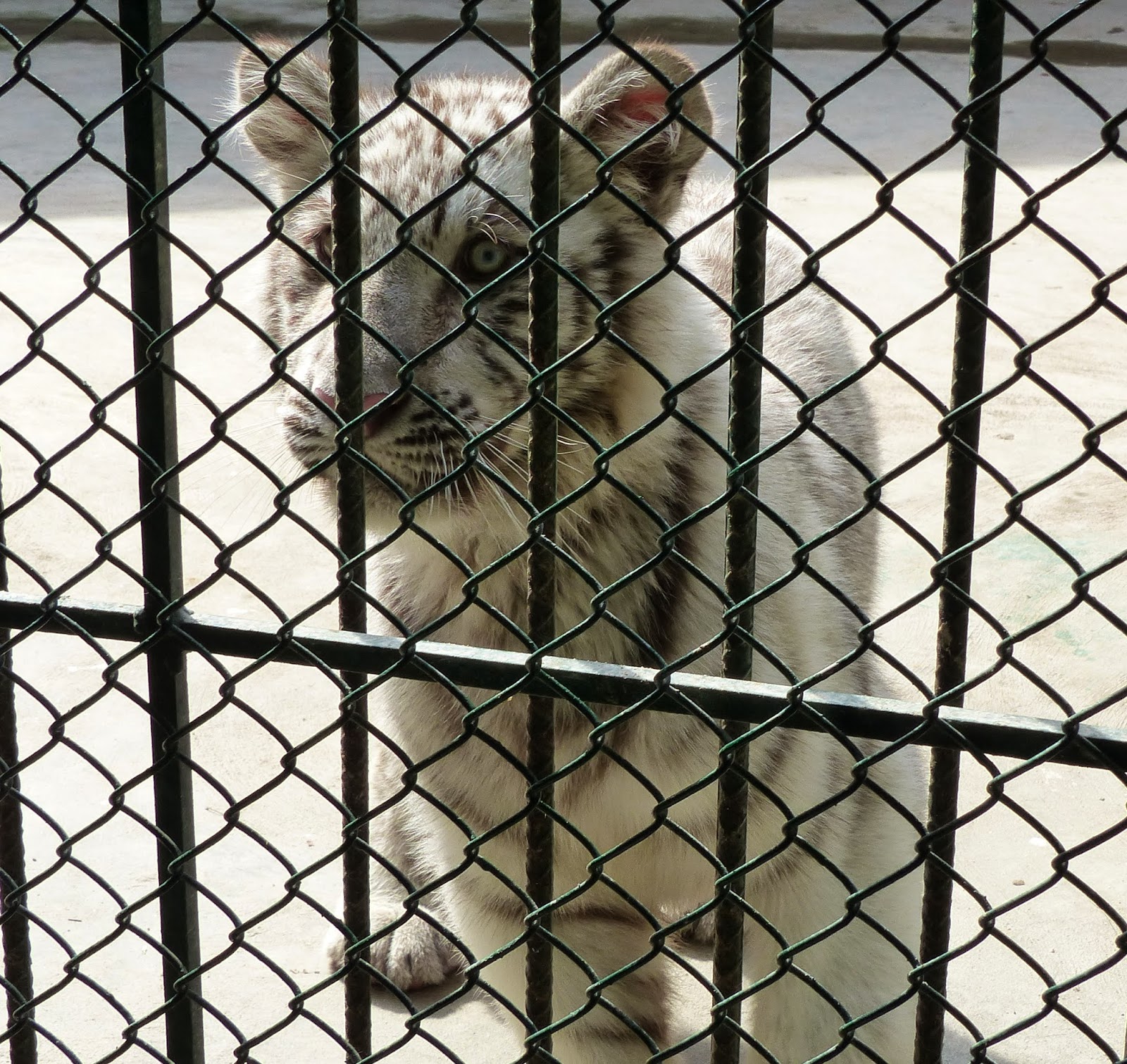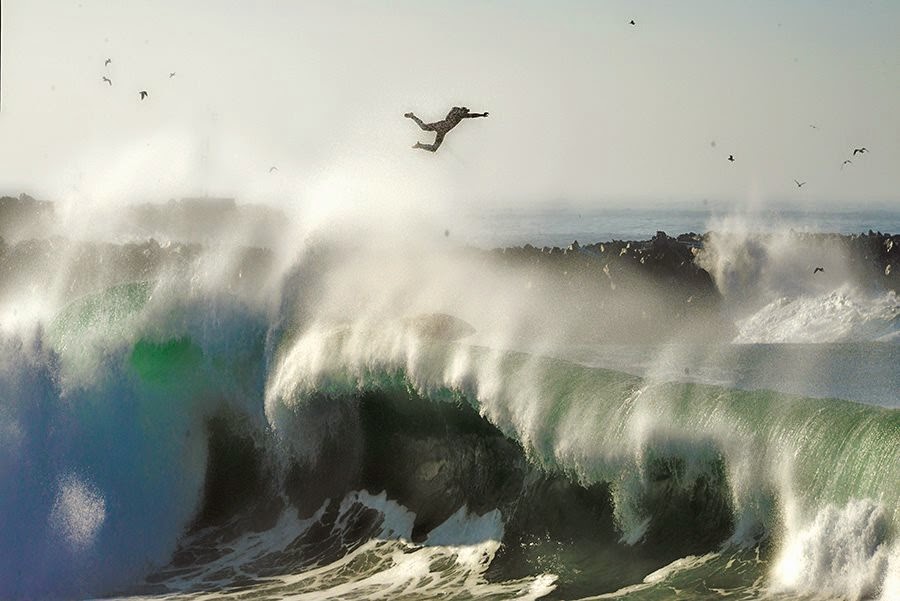Finisterra arrived in La Cruz on November 30th and we immediately entered a whirlwind of socializing with lots of friends, old and new. Some had recently arrived from the US and Canada while others spent the year more or less full time in Mexico, but everyone was pretty much in a partying mood and we enthusiastically went with the flow. Two days after we arrived here I was surprised to find that Caramba, a boat I had designed way back in 1977 was a few slips down from Finisterra. The owners, Terry and Jo Reish had sailed down from California last year and spent the summer in the Sea of Cortez. It is really nice to know they are enjoying the boat.
While in the slip at the Marina Riviera Nayarit, I went aloft and scrubbed all the grime leftover from our stay in Los Angeles off of the mast, spreaders and rigging. After that, Finisterra's hull and deck were polished and waxed, the engine serviced and bottom cleaned. We also got out the sandpaper and varnish and are in the midst of adding three more coats of varnish to the teak cap rails.
Off Cabo San Lucas the autopilot linear drive started making strange noises. I think it was trying to tell me that it's getting ready to die. It lasted until we arrived in La Cruz, and is still working now, but the grinding sound it was making is still there. I ordered a replacement drive from Defender Industries in the US, which assured me that they ship to "Yachts in Transit" in Mexico all the time. A "Yacht in Transit" is a foreign yacht that is traveling through Mexican waters with a Temporary Import Permit. Unfortunately the package got stuck in customs at Guadalajara. The paperwork from Defender was incorrect and incomplete and the Mexican authorities wouldn't release it. So it was eventually returned to Defender and I ordered the drive through a local distributor in Puerto Vallarta. It was a hassle getting the situation sorted out but eventually Defender did reimburse me for the parts I didn't receive from them. The lesson here is that it's important to have your parts shipped from the US through a customs broker and not to rely on American suppliers that say they ship to yachts in transit in Mexico.
This will be our second Christmas season in La Cruz and the town really gets into the Christmas spirit. Last night we were walking up to a restaurant in town when we came upon a large group of locals who were watching a reenactment of the night Joseph and Mary showed up in Bethlehem looking for a place to stay. The kids did a beautiful job but I didn't have a camera with me so you'll have to take my word for it.
A few days ago we drove through Puerto Vallarta toward Mismaloya and stopped at the zoo. It was a nice zoo as zoos go, but some of the animals, particularly the big cats, looked fairly miserable in their rather cramped quarters. I'm coming close to making the decision to boycott zoos in the future.
We plan to sit tight here in the La Cruz Vortex another couple of weeks, until some parts I ordered from the States arrive. There are few places in the world I'd rather be stuck in. Until then, Feliz Navidad y Prospero Ano Nuevo!
.jpg) |
| During her stay in the Sea of Cortez, Caramba acquired a full sunshade as well as an air conditioner. |
While in the slip at the Marina Riviera Nayarit, I went aloft and scrubbed all the grime leftover from our stay in Los Angeles off of the mast, spreaders and rigging. After that, Finisterra's hull and deck were polished and waxed, the engine serviced and bottom cleaned. We also got out the sandpaper and varnish and are in the midst of adding three more coats of varnish to the teak cap rails.
Off Cabo San Lucas the autopilot linear drive started making strange noises. I think it was trying to tell me that it's getting ready to die. It lasted until we arrived in La Cruz, and is still working now, but the grinding sound it was making is still there. I ordered a replacement drive from Defender Industries in the US, which assured me that they ship to "Yachts in Transit" in Mexico all the time. A "Yacht in Transit" is a foreign yacht that is traveling through Mexican waters with a Temporary Import Permit. Unfortunately the package got stuck in customs at Guadalajara. The paperwork from Defender was incorrect and incomplete and the Mexican authorities wouldn't release it. So it was eventually returned to Defender and I ordered the drive through a local distributor in Puerto Vallarta. It was a hassle getting the situation sorted out but eventually Defender did reimburse me for the parts I didn't receive from them. The lesson here is that it's important to have your parts shipped from the US through a customs broker and not to rely on American suppliers that say they ship to yachts in transit in Mexico.
This will be our second Christmas season in La Cruz and the town really gets into the Christmas spirit. Last night we were walking up to a restaurant in town when we came upon a large group of locals who were watching a reenactment of the night Joseph and Mary showed up in Bethlehem looking for a place to stay. The kids did a beautiful job but I didn't have a camera with me so you'll have to take my word for it.
 |
| Finisterra dressed for Christmas |
A few days ago we drove through Puerto Vallarta toward Mismaloya and stopped at the zoo. It was a nice zoo as zoos go, but some of the animals, particularly the big cats, looked fairly miserable in their rather cramped quarters. I'm coming close to making the decision to boycott zoos in the future.
We plan to sit tight here in the La Cruz Vortex another couple of weeks, until some parts I ordered from the States arrive. There are few places in the world I'd rather be stuck in. Until then, Feliz Navidad y Prospero Ano Nuevo!

.jpg)
.jpg)

.jpg)
.jpg)
.jpg)
.jpg)



























.JPG)











